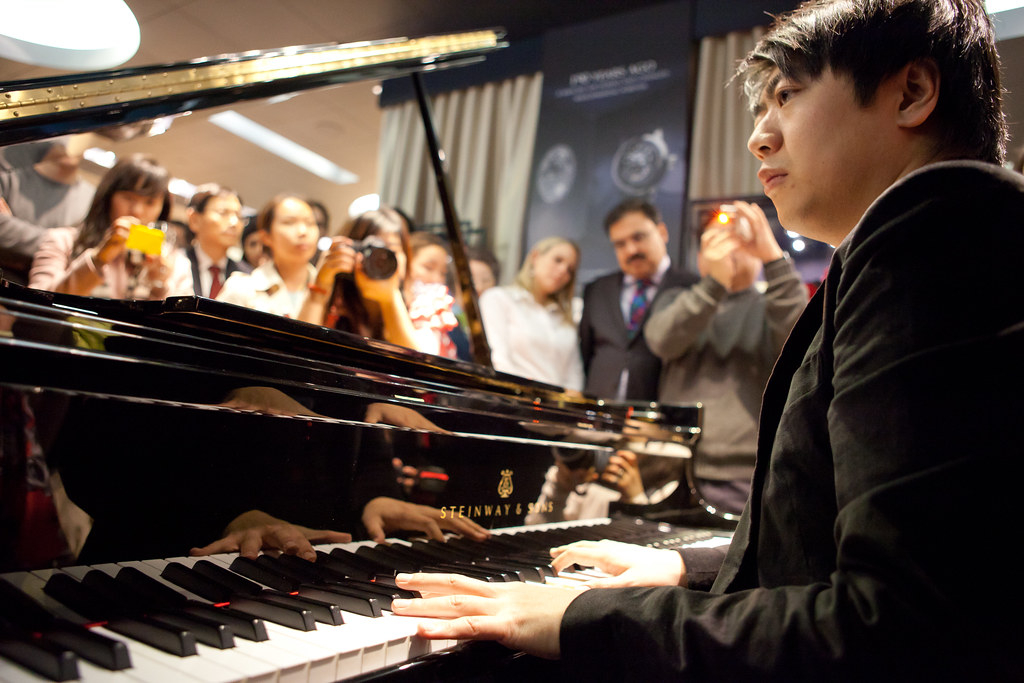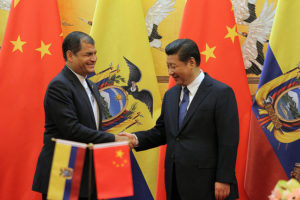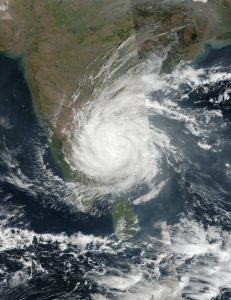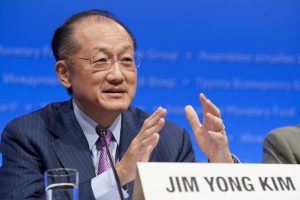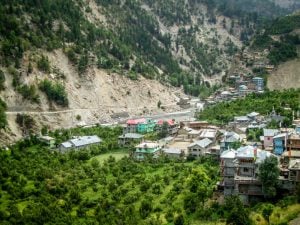Music has always been a symbolic means of exchange between countries. This is also true of China. From Isaac Stern’s visit to China, to the affective subtlety of Glenn Gould’s interpretations of Bach described in the 2016 Man Booker prize shortlisted “Do Not Say We Have Nothing” by Madeleine Thien, which revolves around the Shanghai Conservatory of Music throughout the 20th century, China’s relationship with the rest of the world has often been conveyed through music.
Little surprise, then, that it was the lauded Chinese pianist Lang Lang who was chosen as the image ambassador of the “China-Latin America and Caribbean 2016 Year of Cultural Exchange” which drew to a close on President Xi Jinping’s recent Latin America tour.
However, Lang Lang also represents something else. He is sponsored by Industrial and Commercial Bank of China and China Merchants Bank, which funds the El Mirador copper mine in Ecuador – the site of an ongoing social and environmental conflict. This fact was not lost on the Yasunidos campaign group, which staged a demonstration at a Lang Lang concert in Munich in April this year.
This “Year of Culture” was first announced by President Xi in July 2014 but it has received little critical attention beyond the success stories published in Chinese and some Latin American media. What the year has meant, its objectives, results and social impacts are yet to be analysed.
The China Arts and Entertainment Group, a large-scale state-level association supervised by the Ministries of Culture and Finance, responded to the initiative by holding activities in support of the nation’s cultural diplomacy. Building on China’s global economic integration, they established “Bringing In and Going Out” projects, which aimed to: “expand China’s cultural influence and kindness in Latin America and set up China’s new image as open, democratic, harmonious and innovative.”
China’s second “white paper” on Latin America, which was announced on November 24, and which follows a first document issued in 2008, emphasises the importance of mutual cultural learning in exchanges with Latin America. The Year of Culture, then, was part of Beijing’s effort to achieve this, and also extend the existing mission of Confucius Institutes to provide “a platform for cultural exchanges between China and the world, as well as a bridge reinforcing friendship and cooperation” as outlined on its website. According to Hanban, the institute’s headquarters, there are 36 Confucius Institutes in Latin American and the Caribbean.
How Latin Americans have felt the symbolical-cultural dimensions of the growing weight of China in the region in recent years, however, has not always been in response to these Chinese stimuli. Indeed, the development of cultural activities linked to China has grown gradually from before the Year of Culture and will extend beyond its parameters. This is the case throughout the Americas.
While many of the state-led and some private art and cultural expressions have not been exempt of stereotypes, independent of these initiatives we find complex readings of the relationship between Latin America and China which question the axis around which the relation is being built.
For example, in August-September 2016 Beatrice Glow held her exhibition Aromérica Parfumeur at a gallery of the National Museum of Fine Art in Santiago de Chile. Her work challenges ideas of ‘otherness’ in Latin America through the role of China and the many uses of the term “chino.” In 2011, Argentinean Sebastián Borensztein explored issues of communication and cultural difference in his film Un cuento chino (A Chinese tale). Similarly, the Chilean artist Bruna Truffa explored the increasing weight of Chinese industrial, cultural and aesthetic objects in Latin America, and the communist imaginary which informs the exchange, in her 2007 individual exhibition Hecho en China (Made in China). Complex ways of viewing the Latin America-China relation have also emerged in literature and other media, such as Mexican author Julián Herbert’s 2015 novel La casa del dolor ajeno (The House of Others’ Pain), which investigates the 1911 massacre of hundreds of Chinese in Torreón, México.
In different ways, these works explore otherness, neo-colonialism, historical and enduring racism, and the role of China and Chinese communities in Latin America. Governmental exhibits usually overlook this, rather emphasising ‘traditional’ images of China through reference to past dynasties or art which has become detached of its political content. In this sense, Chinese influence seems to go beyond government initiatives.
And yet, as these exhibitions also highlight (intentionally or unintentionally), while the Chinese cultural initiative allows for engagement to take place on different levels, the lack of deeper mutual learning, of more critical perspectives is still striking. China not only continues to be presented as “other” and “distant,” but the overall knowledge on China in Latin America is restricted and of difficult availability. This Year of Culture is revealing of the interest of China in Latin America and shows that China thinks of the relationship as evolving and deepening but at the same time it highlights sizeable gaps.
So what does the China Latin America Cultural Exchange year really mean? It confirms the interest of China in Latin America, and of Latin America in China, while it simultaneously reveals the complexity and challenges that the cultural relations signify, which go well beyond this initiative. In this sense, one thing is touring artists, another is promoting engagement and exchanges which can develop between a range of different actors in the future. Indeed, Chinese communities are more strongly embedded in the local communities than official governmental statements seem to acknowledge, and thus fixed boundaries about what is (or not) strictly Chinese or Latin American needs to be interrogated. Latin American businesspeople, politicians and civil societies, many of which probably knew nothing of the Year of Culture urgently need to learn more about China. How they will go about it is less clear.
The complexity of the relations between both regions is reflected in the Lang Lang Munich concert protest. Protesters called on Lang Lang to demand that the banks stop funding Chinese companies blamed for environmental and social destruction of the Cordillera del Cóndor in Ecuador. While their environmental performance is not necessarily any worse than Swiss or American counterparts, Chinese companies and banks in Ecuador and other countries in the region have faced severe criticism and, crucially, communication problems with local and international groups. While both public and privately-backed Chinese extractive projects, such as El Mirador and Las Bambas, have experienced great opposition for a variety of reasons, cultural activities and people to people diplomacy have been mostly welcomed with limited criticism.
The China-Latin America and Caribbean 2016 Year of Cultural Exchange echoes a growing and thoughtful reflection of a relation which has already emerged in literature and other arts, as well as in academic circles. And it has the potential to grow. While these appraisals take the relationship beyond economic and strictly state-led engagement, they also highlight the fact that broader understanding is needed and there are still many challenges.
